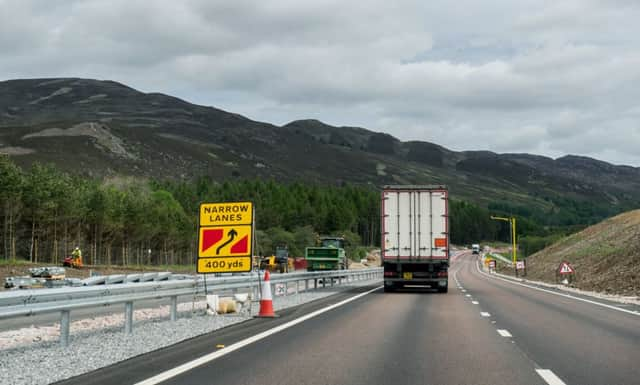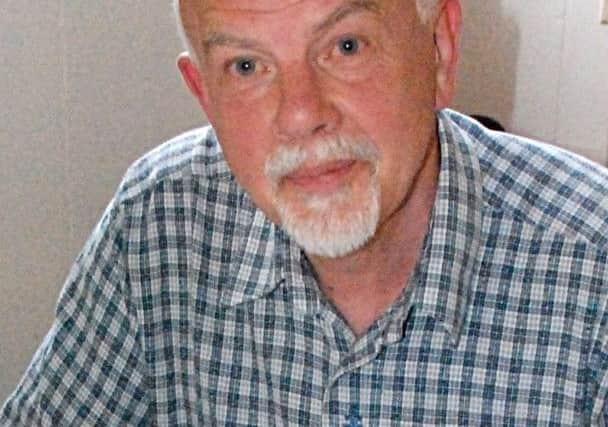Rail upgrades are needed to stay on track in tackling climate emergency – David Spaven


Scottish Government policy already backs rail freight – not least for its substantial carbon advantages over road haulage – but achieving (and hopefully far exceeding) the growth targets it has set the industry will need a very significant change in the balance of investment between rail and road.
New or enhanced infrastructure is a fundamental part of the solution, with the road haulage industry having benefited enormously from high levels of funding for new roads such as the Aberdeen Western Peripheral Route, A9 dualling, M8 completion and the M74 Northern Extension.
Advertisement
Hide AdAdvertisement
Hide AdEarlier this year, the National Infrastructure Commission published its Freight Study – www.nic.org.uk/our-work/freight-study/ – which included a key recommendation with important lessons for Scotland: “Government should undertake detailed cross-modal analysis, using a corridor-based approach, of the long term options for rail freight’s transition to zero emissions, including low carbon rail services and the scope for road based alternatives.”


This kind of approach has been sadly lacking from the Scottish Government, classically in the context of imbalanced road and rail investment on the Perth-Inverness corridor. The rail spend has been just £65million to date – despite £200m-£450m mooted in 2008 – in contrast to road benefiting from the £3,000m A9 dualling project. The daily Stobart/Tesco train to Inverness is still restricted to 20 containers because of the short crossing loops on this largely single-track railway, when the locomotive could pull 28.
So, what are the key enhancements required to create a competitive ‘level playing field’ between road haulage and rail freight?
The modernisation of strategic Anglo-Scottish route corridors is fundamental to unlocking the potential for rail freight to better serve domestic and export markets.
Amongst the core upgrades needed are lengthened overtaking loops on the East Coast Main Line (ECML) and the West Coast Main Line (WCML) to accommodate 775-metre freight trains, the maximum which can pass through the Channel Tunnel (and the equivalent of more than 40 lorry loads).
Also, to match ‘loading gauge’ along the ECML (height and width of structures to readily accommodate the latest container dimensions), equivalent improvements are needed on the core rail freight spine from Grangemouth through Coatbridge and Mossend, then over the WCML to Carlisle and southern markets.
But rail freight cannot prosper simply by concentrating on the Anglo-Scottish lines. Upgrading key feeder rail routes within Scotland is crucial to the strategy. Some of the obvious targets are early electrification of the routes from Central Scotland to Aberdeen and Inverness – speeding up transits, improving route capacity and further cutting carbon emissions compared to road haulage – and long-overdue enhancement of the largely single-track Highland Main Line from Perth to Inverness, with longer crossing loops and more double track allowing rail freight to increase the capacity of each container train, improving rail productivity by up to 40 per cent.
Also needed are lengthened overtaking loops on the route linking rail hubs at Mossend, Coatbridge and Grangemouth with Aberdeen – allowing longer, greener and more cost-effective trains to compete better with road haulage while loading gauge enhancements on the routes to Inverness and Aberdeen would allow rail conveyance of wider refrigerated containers for chilled and frozen food.
Advertisement
Hide AdAdvertisement
Hide AdImproved rail routes are essential, but realising their potential depends in part on the creation of new or enhanced rail freight terminals to serve currently neglected regions. Amongst the priorities should be Dundee – one of the largest cities in Britain with no rail freight facilities (indeed there are none in the whole of Tayside) and Speyside, where terminals at Keith and/or Elgin are needed to allow rail freight to serve the market for food and drink, helping to cut down on the 50,000 long-distance whisky lorry trips on the A9 annually.
There should also be direct rail access to key whisky industry sites, such as Cameron Bridge in Fife (the largest grain distillery in Europe) and Cambus/Blackgrange near Alloa (the largest bonded warehouse site in Europe) – both sites are adjacent to rail corridors.
Bathgate also serves one of Scotland’s major concentrations of regional distribution centres, bringing in retail goods from suppliers worldwide.
Serious progress on this kind of programme will demonstrate that the Scottish Government is committed to ensuring that transport plays a full and proper part in tackling the climate emergency – and, in so doing, also securing the substantial road congestion, road safety and road damage benefits of switching freight from truck to train.
David Spaven, Scottish representative, Rail Freight Group.